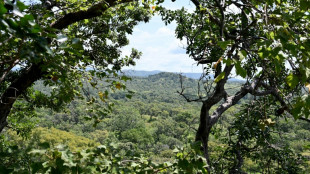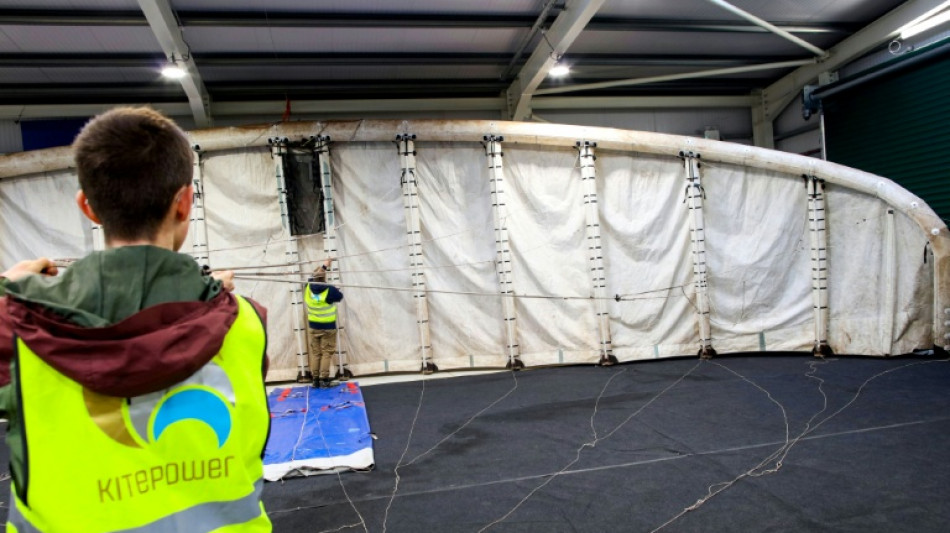
-
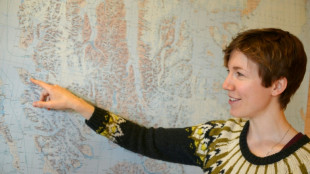 Explorers seek ancient Antarctica ice in climate change study
Explorers seek ancient Antarctica ice in climate change study
-
India's Iyer discharged from hospital after lacerated spleen

-
 Serbia marks first anniversary of deadly train station collapse
Serbia marks first anniversary of deadly train station collapse
-
Latin America weathered Trump tariffs better than feared: regional bank chief
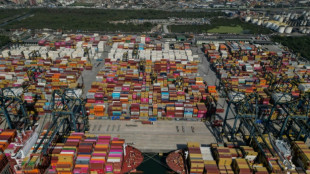
-
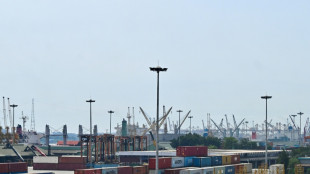 Bangladesh dockers strike over foreign takeover of key port
Bangladesh dockers strike over foreign takeover of key port
-
Tanzania president wins election landslide after deadly protests

-
 Sixers suffer first loss, Bulls stay perfect as NBA Cup opens
Sixers suffer first loss, Bulls stay perfect as NBA Cup opens
-
Dodgers, Blue Jays gear up for winner-take-all World Series game seven

-
 Taiwan's new opposition leader against defence spending hike
Taiwan's new opposition leader against defence spending hike
-
China to exempt some Nexperia chips from export ban

-
 Dodgers hold off Blue Jays 3-1 to force World Series game seven
Dodgers hold off Blue Jays 3-1 to force World Series game seven
-
Crowns, beauty, fried chicken: Korean culture meets diplomacy at APEC

-
 Panama wins canal expansion arbitration against Spanish company
Panama wins canal expansion arbitration against Spanish company
-
Myanmar fireworks festival goers shun politics for tradition
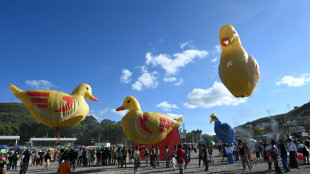
-
 China to exempt some Nexperia orders from export ban
China to exempt some Nexperia orders from export ban
-
Sixers suffer first loss as NBA Cup begins

-
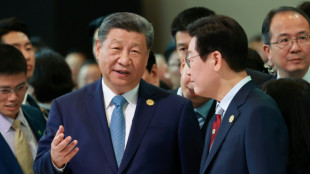 China's Xi to meet South Korean leader, capping APEC summit
China's Xi to meet South Korean leader, capping APEC summit
-
Japan's Chiba leads after Skate Canada short program

-
 Finland's crackdown on undocumented migrants sparks fear
Finland's crackdown on undocumented migrants sparks fear
-
Climbers test limits at Yosemite, short-staffed by US shutdown
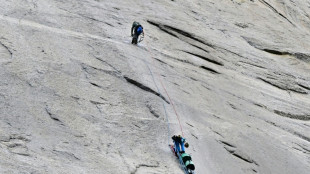
-
 Gstaad gives O'Brien record 21st Breeders' Cup win
Gstaad gives O'Brien record 21st Breeders' Cup win
-
After the tears, anger on Rio's blood-stained streets

-
 Sinner boosts number one bid in Paris, to face Zverev in semis
Sinner boosts number one bid in Paris, to face Zverev in semis
-
Springer back in Toronto lineup as Blue Jays try to close out Dodgers

-
 Nationals make Butera MLB's youngest manager since 1972
Nationals make Butera MLB's youngest manager since 1972
-
Guirassy lifts Dortmund past Augsburg ahead of Man City clash

-
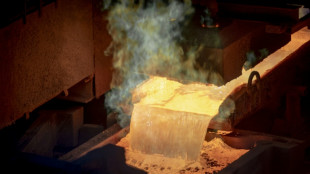 G7 says it's 'serious' about confronting China's critical mineral dominance
G7 says it's 'serious' about confronting China's critical mineral dominance
-
NFL fines Ravens $100,000 over Jackson injury status report

-
 NBA refs to start using headsets on Saturday
NBA refs to start using headsets on Saturday
-
Trump says Christians in Nigeria face 'existential threat'

-
 French-Turkish actor Tcheky Karyo dies at 72
French-Turkish actor Tcheky Karyo dies at 72
-
Food stamps, the bulwark against hunger for over 40 mn Americans

-
 Trump keeps world guessing with shock nuclear test order
Trump keeps world guessing with shock nuclear test order
-
Wall Street stocks rebound on Amazon, Apple earnings

-
 US Fed official backed rate pause because inflation 'too high'
US Fed official backed rate pause because inflation 'too high'
-
Prayers and anthems: welcome to the Trump-era Kennedy Center

-
 Swiss central bank profits boosted by gold price surge
Swiss central bank profits boosted by gold price surge
-
Sinner beats Shelton to boost number one bid in Paris

-
 French court jails Bulgarians for up to four years for Holocaust memorial defacement
French court jails Bulgarians for up to four years for Holocaust memorial defacement
-
Profits dip at ExxonMobil, Chevron on lower crude prices

-
 Ashraf and Mirza skittle South Africa as Pakistan win 2nd T20
Ashraf and Mirza skittle South Africa as Pakistan win 2nd T20
-
2,000 trucks stuck in Belarus after Lithuania closes border: association
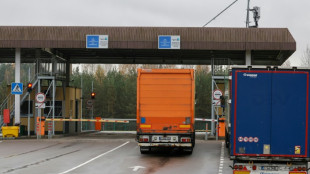
-
 French lawmakers reject wealth tax proposal in budget debate
French lawmakers reject wealth tax proposal in budget debate
-
Premier League blames European expansion for lack of Boxing Day games

-
 Bublik sets up Auger-Aliassime semi-final at Paris Masters
Bublik sets up Auger-Aliassime semi-final at Paris Masters
-
World's most expensive coffee goes on sale in Dubai at $1,000 a cup

-
 Trump stirs global tensions, confusion with nuclear test order
Trump stirs global tensions, confusion with nuclear test order
-
Panic across US as health insurance costs set to surge

-
 Court eases ban on Russian lugers but Olympic hopes on thin ice
Court eases ban on Russian lugers but Olympic hopes on thin ice
-
England captain Itoje targets Autumn Nations clean sweep


'Let's go fly a kite': Capturing wind for clean energy in Ireland
On Ireland's blustery western seaboard researchers are gleefully flying giant kites -- not for fun but in the hope of generating renewable electricity and sparking a "revolution" in wind energy.
"We use a kite to capture the wind and a generator at the bottom of it that captures the power," Padraic Doherty of Kitepower, the Dutch firm behind the venture, told AFP.
At its test site in operation since September 2023 near the small town of Bangor Erris, the team transports the vast 60-square-metre (645,000-square-feet) kite from a hangar across the lunar-like bogland to a generator.
The kite is then attached by a cable tether to the machine and acts like a "yo-yo or fishing reel", Doherty said.
"It gets cast out and flies up, the tether pulls it back in, over and over again, creating energy," he said, testing the kite's ropes and pulleys before a flight.
The sparsely populated spot near the stormy Atlantic coast is the world's first designated airborne renewable energy test site.
And although the idea is still small in scale, it could yet prove to be a mighty plan as Ireland seeks to cut its reliance on fossil fuels such as oil and gas.
"We are witnessing a revolution in wind energy," said Andrei Luca, operations head at Kitepower, a zero-emissions energy solutions spin-off from the Delft University of Technology.
"It took nearly 25 years for wind turbines to evolve from 30 kilowatt prototypes to megawatt scale, and decades to offshore wind farms we see today," he added.
The system flies autonomously, driven by software developed at the university in the Netherlands, but Doherty acts as the kite's "pilot" on the ground, monitoring its flight path for efficiency.
The kite flies up around 400 metres (1,300 feet) and reels in to about 190 metres, generating around 30 kilowatts per hour for storage.
The force spins "like a dynamo on a bike", Doherty said, adding that "it generates up to two and a half tonnes of force through each turn".
The electricity is stored in batteries, similar to solar photovoltaic systems, with the kite currently able to fully charge a 336 kilowatt per hour battery.
"That's a meaningful amount of energy, sufficient for powering a remote outpost, a small island, polar station, or even a construction site," Luca said.
"Add additional kites and we can power a bigger island."
- 'Mobile, flexible' -
According to Doherty, a chief advantage of the kite system is its flexibility and swift start-up capability.
"We can set up in 24 hours and can bring it anywhere, it's super mobile, and doesn't need expensive, time- and energy-consuming turbine foundations to be built," he said.
A kite system is "way less invasive on the landscape (than wind turbines), produces clean energy and doesn't need a supply chain of fuel to keep running", Luca added.
During January's Storm Eowyn, which caused widespread and long-lasting power outages in Ireland, the system showed its value in Bangor Erris, according to Luca.
"Paired with a battery, it provided uninterrupted electricity before, during and after the storm," he said.
Ireland's wind energy sector has long been touted as full of potential.
But progress on large-scale delivery of onshore and offshore turbines has been held up by planning delays and electricity grid capacity constraints.
The Irish government has set ambitious targets for offshore wind energy to deliver 20 gigawatts of energy by 2040 and at least 37 gigawatts by 2050.
In 2024, Irish wind farms provided around a third of the country's electricity according to Wind Energy Ireland (WEI), a lobby group for the sector.
This compares to the UK where, according to trade association RenewableUK, wind energy from the country's combined wind farms first reached 20 gigawatts in November 2022.
The ability of airborne wind energy (AWE) systems to harness high-altitude winds with relatively low infrastructure requirements "makes them particularly suitable for remote, offshore or mobile applications," Mahdi Salari, an AWE researcher at University College Cork, told AFP.
But he said Kitepower would face challenges on "regulation, safety, and system reliability".
Such technology however could plug gaps in places where "land availability, costs or logistical constraints hinder the deployment of traditional wind turbines", Salari said.
By the 2030s, he said: "I expect AWE to contribute meaningfully to diversified, flexible and distributed renewable energy networks".
D.Qudsi--SF-PST


